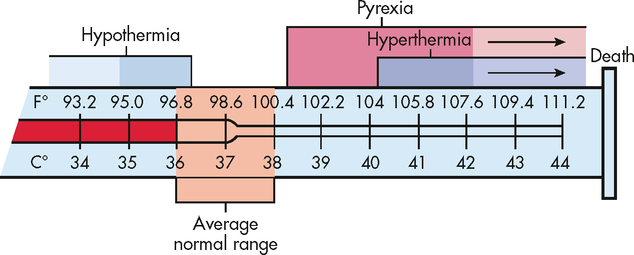

Incidentally, while the UK's Met Office started publishing temperatures in both Celsius and Fahrenheit from 1962 and dropping use of Fahrenheit altogether from official reports in 1970, British media persisted in using Fahrenheit in weather reports well into the 21st century.
#Body temperature conversion fever license
On the Fahrenheit scale, these respectively measure at about 52☏ and 95☏, with the latter traditionally taken as license for red top tabloids to start running 48 point headlines containing words like 'Phew', 'Flaming' and 'Scorcher'. A temperature between 37.5☌ and 38☌ is an elevated body temperature. When the temperature measured in the mouth rises above 37.5 degrees Celsius (or 99.5 ° F), 38 degrees Celsius (100.4 ° F) in the rectum, it can be considered fever. Temperatures above 39.5☌ (103.1☏) are considered to be a high fever, and very high fever is defined as any temperature above 41☌ (105.8☏). A body temperature of 38☌ (100.4☏) or more is considered to be a fever.

Medical research hasnt determined an exact correlation between oral, rectal, ear, armpit, and forehead temperature measurements. Our body produces prostaglandins to fight off germs. In Celsius, a chilly day at 11☌ does not seem greatly different from a really hot one at 35☌. But the temperature readings vary depending on which one you use, and you need an accurate body temperature to determine if a fever is present. This may help explain why many people prefer Fahrenheit readings as rather closer to actual experience. These are very different things, as we shall explain in a future article. Also, whereas Fahrenheit had developed a ratio scale, Celsius had produced an interval scale. For while the Celsius scale was developed for convenience, Fahrenheit's scale was based on observation and measurement. The same age-related trend held true for all individual measurement sites (Figure 1C, Table 3). In most adults an oral or axillary temperature above 37.6☌ (99.7☏) or a rectal or ear temperature above 38.1☌ (100.6☏) is considered a fever. Overall, when using the data from all of the measurement sites, the average body temperature of younger adults (<60 years of age) was higher (36.69 0.34) than the average body temperature of older adults ( 60 years of age), which was 36.5 0.48. This reluctance was partly due to human preference. What temperature is 36.8 Celsius in Fahrenheit As we know 36.8° Celsius or 98.24° Fahrenheit is the normal temperature of human body. Metrication from the 1950s, Celsius became the adopted temperature scale for the EEC (later EU), with the UK and Ireland converting (somewhat reluctantly) after joining the European community. Fahrenheit and celsius temperature conversionįrom the mid-18th to mid-20th centuries, Fahrenheit was the system most widely used in English-speaking countries, while continental Europeans preferred 'The Swedish Scale'.


 0 kommentar(er)
0 kommentar(er)
